I am having a hard time understanding why the confidence intervals are not showing with my data. When I reproduce my code on another dataset, the code seems to work fine. For example, on mtcars
The code is
mtols = mtcars %>% group_by(am) %>% do(lm0 = lm(disp ~ mpg*gear + vs, data=.)) %>%
augment(., lm0) %>%
mutate(ymin=.fitted-1.96*.se.fit, ymax=.fitted+1.96*.se.fit)
To generate the plot
mtols %>% ggplot(aes(mpg, .fitted) ) +
geom_smooth(data = mtols, aes(mpg, .fitted, group = gear, colour = gear, fill= gear), method="lm") +
theme_minimal() + facet_grid(~am)
I get the confidence intervals.
However this doesn't work with my data. Could someone help me figure out what goes wrong here ? I would be very grateful.
I compute the OLS with
dt = new %>% group_by(day) %>% do(lm0 = lm(y ~ year*class, data=.)) %>% augment(., lm0) %>%
mutate(ymin=.fitted-1.96*.se.fit, ymax=.fitted+1.96*.se.fit)
dt$year = as.numeric(as.character(dt$year))
The plot, (this is an example with few cases, but the results is the same with the whole dataset)
dt %>% ggplot(aes(year, .fitted) ) +
geom_smooth(data = dt, aes(year, .fitted, group = class, colour = class, fill= class), method="lm") +
theme_bw() + facet_grid(~day)
The CI are not showing.
Any clue what I am doing wrong here ?
Strangely, when I don't use the facet_grid here, the CI work perfectly
dt %>% ggplot(aes(year, .fitted) ) +
geom_smooth(data = dt, aes(year, .fitted, group = class, colour = class, fill= class), method="lm") +
theme_bw()
A sample of my data
library(broom)
library(dplyr)
library(ggplot2)
new = structure(list(id = structure(c(844084L, 114510L, 14070410L,
942483L, 13190105L, 421369L, 301384L, 251789L, 11011210L, 11280408L,
278575L, 310410L, 16260105L, 11110815L, 18260101L, 14260501L,
10580L, 15090210L, 19140410L, 13230615L, 246511L, 20040812L,
14260114L, 287623L, 16090620L, 20131007L, 835743L, 453390L, 395808L,
363617L), label = "Household identifier", class = c("labelled",
"integer")), year = structure(c(1L, 1L, 2L, 1L, 2L, 1L, 1L, 1L,
2L, 2L, 1L, 1L, 2L, 2L, 2L, 2L, 1L, 2L, 2L, 2L, 1L, 2L, 2L, 1L,
2L, 2L, 1L, 1L, 1L, 1L), .Label = c("2000", "2015"), class = "factor"),
day = c("Weekend", "Weekend", "Weekend", "Weekdays", "Weekdays",
"Weekend", "Weekdays", "Weekend", "Weekend", "Weekdays",
"Weekend", "Weekdays", "Weekdays", "Weekend", "Weekend",
"Weekdays", "Weekdays", "Weekend", "Weekdays", "Weekdays",
"Weekdays", "Weekend", "Weekend", "Weekend", "Weekend", "Weekend",
"Weekend", "Weekdays", "Weekdays", "Weekdays"), class = structure(c(1L,
1L, 2L, 2L, 1L, 2L, 2L, 4L, 2L, 2L, 3L, 2L, 1L, 4L, 1L, 3L,
2L, 3L, 2L, 4L, 2L, 1L, 3L, 2L, 1L, 4L, 3L, 2L, 4L, 1L), .Label = c("Higher Managerial",
"Lower Managerial", "Intermediate", "Manual and Routine"), class = "factor"),
y = c(270, 730, 180, 0, 0, 290, 90, 650, 510, 0, 10, 200,
200, 180, 0, 0, 140, 260, 110, 740, 260, 0, 390, 610, 0,
0, 500, 0, 10, 170)), class = "data.frame", row.names = c(NA,
-30L), .Names = c("id", "year", "day", "class", "y"))




